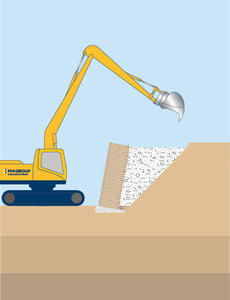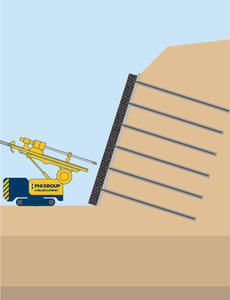

Gravity retaining walls
Gravity retaining walls use the mass within the structure to resist the applied forces from the ground behind. Typically used in a cut situation, they are predominantly installed leaning back at an angle so are less imposing than a vertical structure. There are a wide range of gravity retaining wall solutions available, with cost, aesthetics and design life all a consideration.

Reinforced soil slopes
Reinforced soil slopes and structures are typically used where levels are being raised on site, and steep slopes or vertical structures are required, therefore increasing the amount of flat land available to develop. Material is compacted around layers of reinforcement to form a reinforced soil mass. The facing is then chosen based on slope angle, maintenance and aesthetic considerations.

Reinforced soil structures
Vertical reinforced soil structures use a variety of reinforcing elements such as geogrid, steel ladders or polymer and steel straps. A variety of facing elements are available with modular block and concrete panels being the most popular.

Facing systems